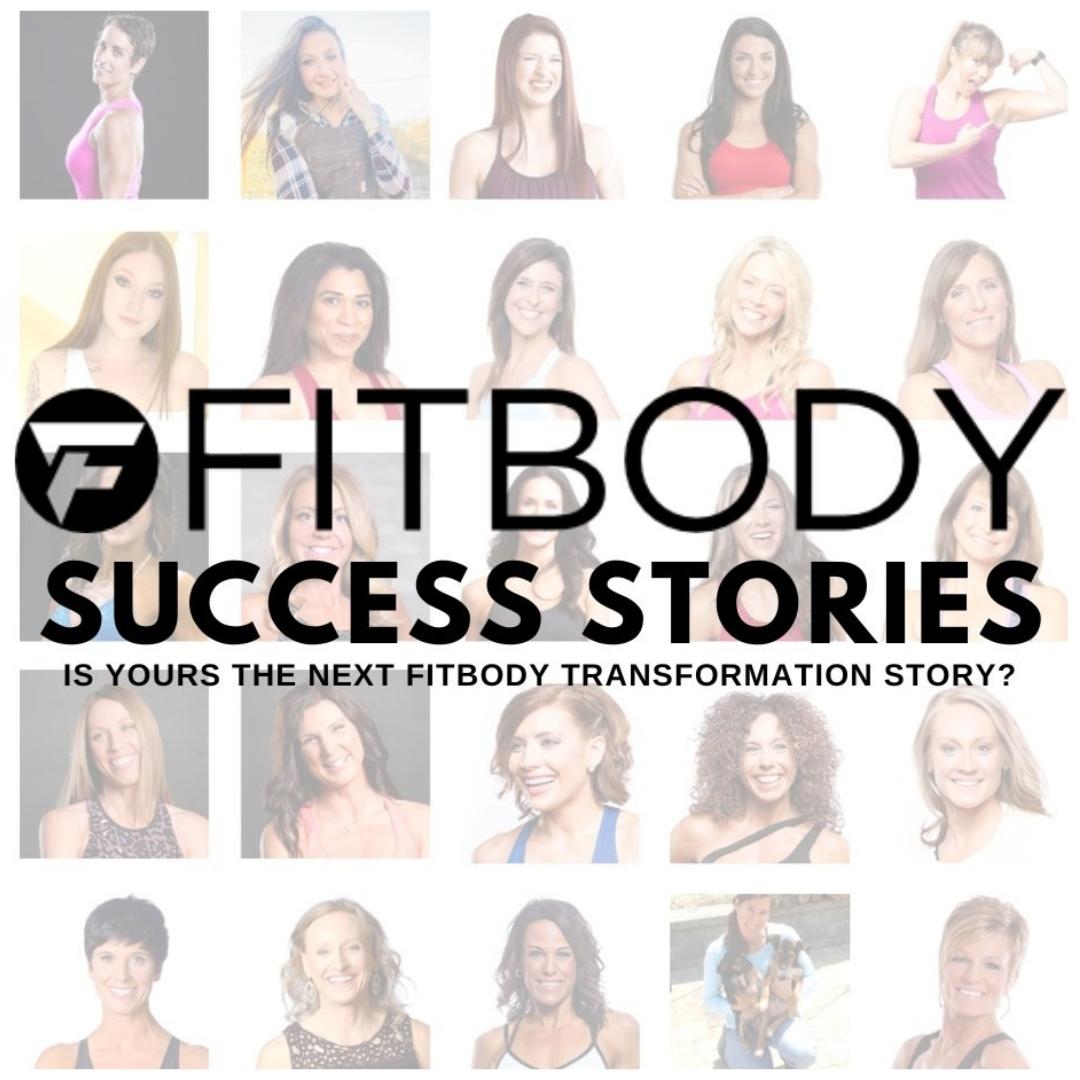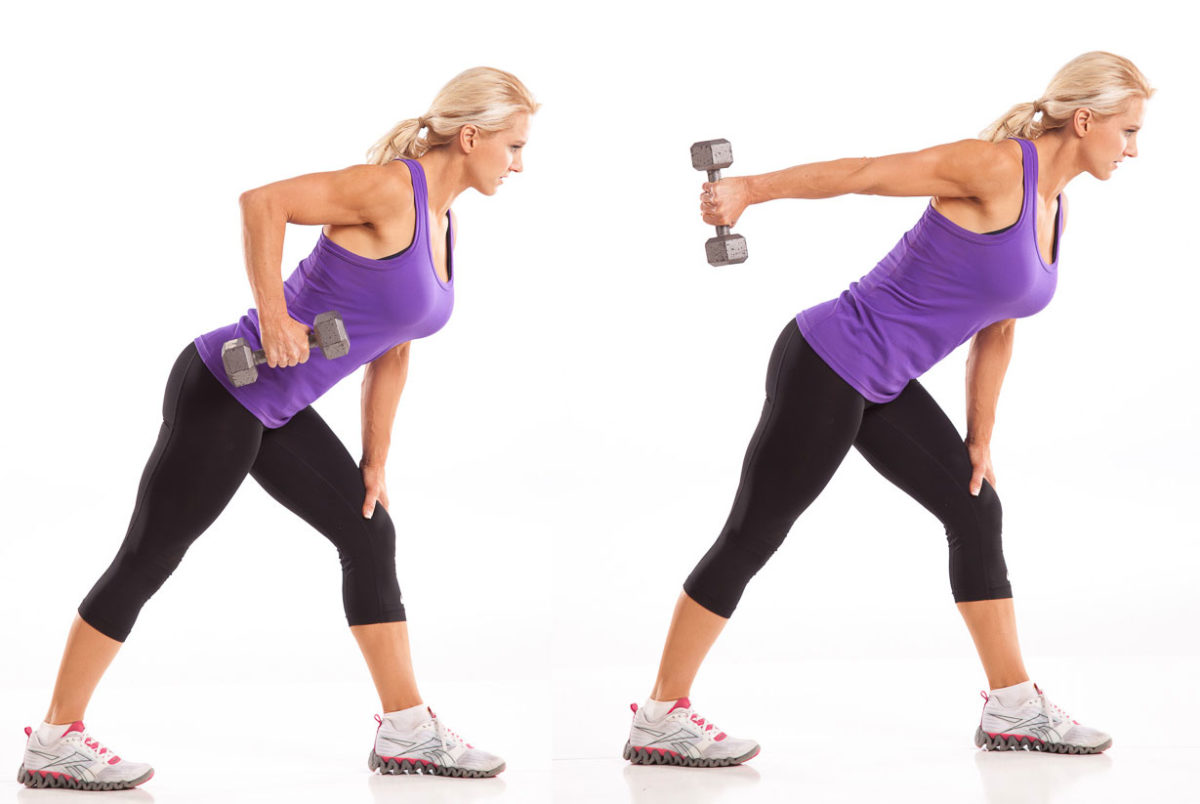Dumbbell Tricep Kickback – A Complete Guide to Tone & Define the Triceps
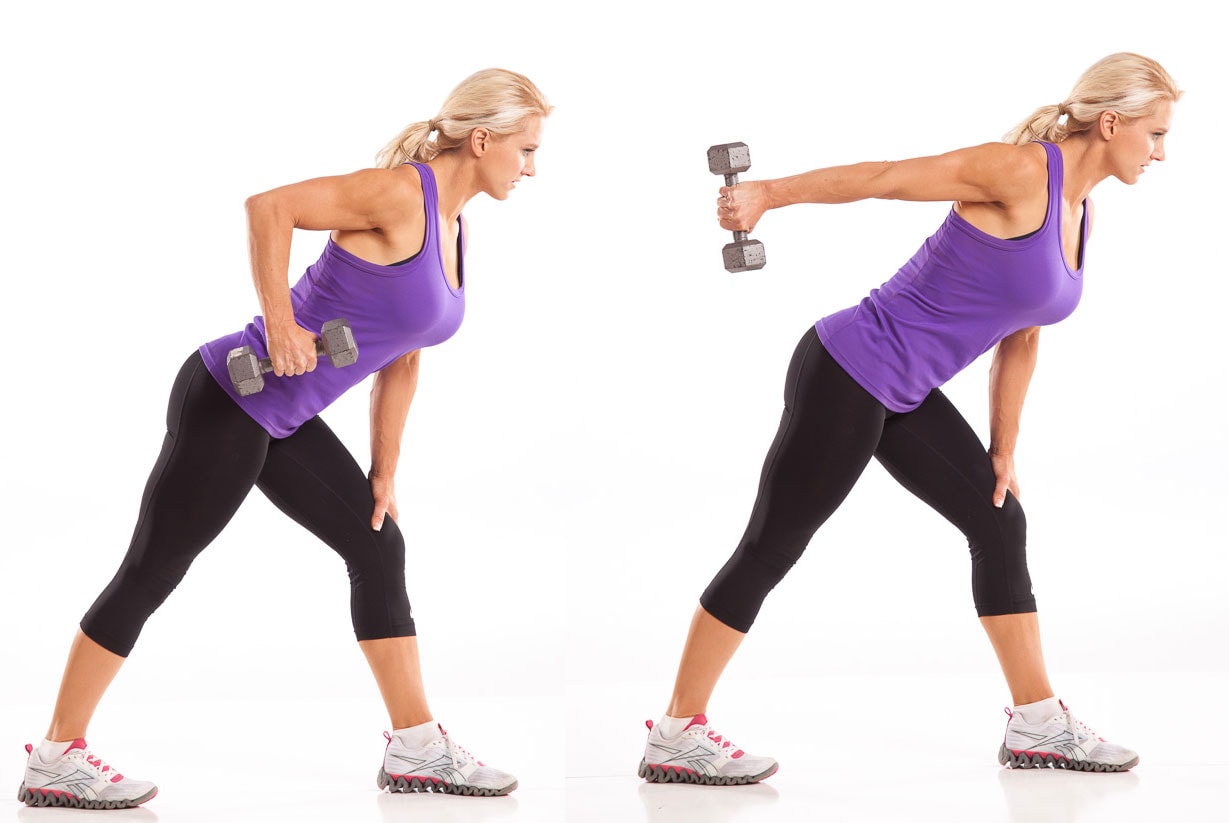
Tricep kickbacks or Dumbbell Kickbacks are an effective arm exercise that is a must-have in your fitness routine. I include this movement for both women that are new to exercise as well as women that are more advanced trainers because it is such a straight forward way to isolate and tone the tricep muscles. If your goal is to tighten the back of your arms ,then understanding and incorporating tricep kickbacks can bring a new level of definition and strength. Let’s dive into what makes dumbbell kickbacks an essential exercise for women looking to tone their upper body!
Step-By-Step How to do Tricep Dumbbell Kickbacks
- Starting Position: Begin the tricep kickback exercise by standing in a split lunge with the front knee bent and back leg straight. Hold a dumbbell, and hinge forward at your hips, keeping your back straight. Bring your elbow in line with the shoulder so that it is at a 90 degree angle with the dumbbell beside your ribs, palms facing each other. I like to use the other hand on the bent leg to brace the upper body.
- Movement Phase: Keeping your upper arms stationary, exhale as you extend your forearm backward until your arm is fully extended. Strive to bring the arm into one straight line parallel with the ground. Focus on using your triceps to drive the dumbbell kickback.
- Pause and Return: Once your arms are fully extended, pause for a moment to feel the contraction in your triceps. Then, inhale as you slowly return the weights to the starting position beside your ribs.
- Repetition and Sets: Aim for 3 sets of 10-15 repetitions, with a 30-60 second rest in between sets.
What are the benefits of a Dumbbell Tricep Kickback?
One of the great things about the tricep kickbacks is that they offer a range of benefits that go beyond simple muscle conditioning. One of the most noticeable outcomes of incorporating this exercise into your routine is enhanced muscle tone. Regular performance of dumbbell kickbacks results in more defined and toned upper arms, giving them a leaner and stronger appearance. Alongside this aesthetic improvement, there’s a significant increase in arm strength. This exercise specifically strengthens your triceps, which plays a pivotal role in daily activities that require pushing or lifting, thus improving your functional capabilities.
Moreover, tricep kickbacks aren’t just about your arms. They also engage your core and back muscles, contributing to improved posture. This is particularly beneficial for those who spend long hours at a desk or in front of a computer. Lastly, the versatility of tricep kickbacks makes them a suitable exercise for individuals at all fitness levels. They can be performed with various weights, allowing you to start light and gradually increase the weight as your strength improves. This adaptability ensures that everyone from beginners to advanced athletes can incorporate tricep kickbacks into their workout regimen effectively.
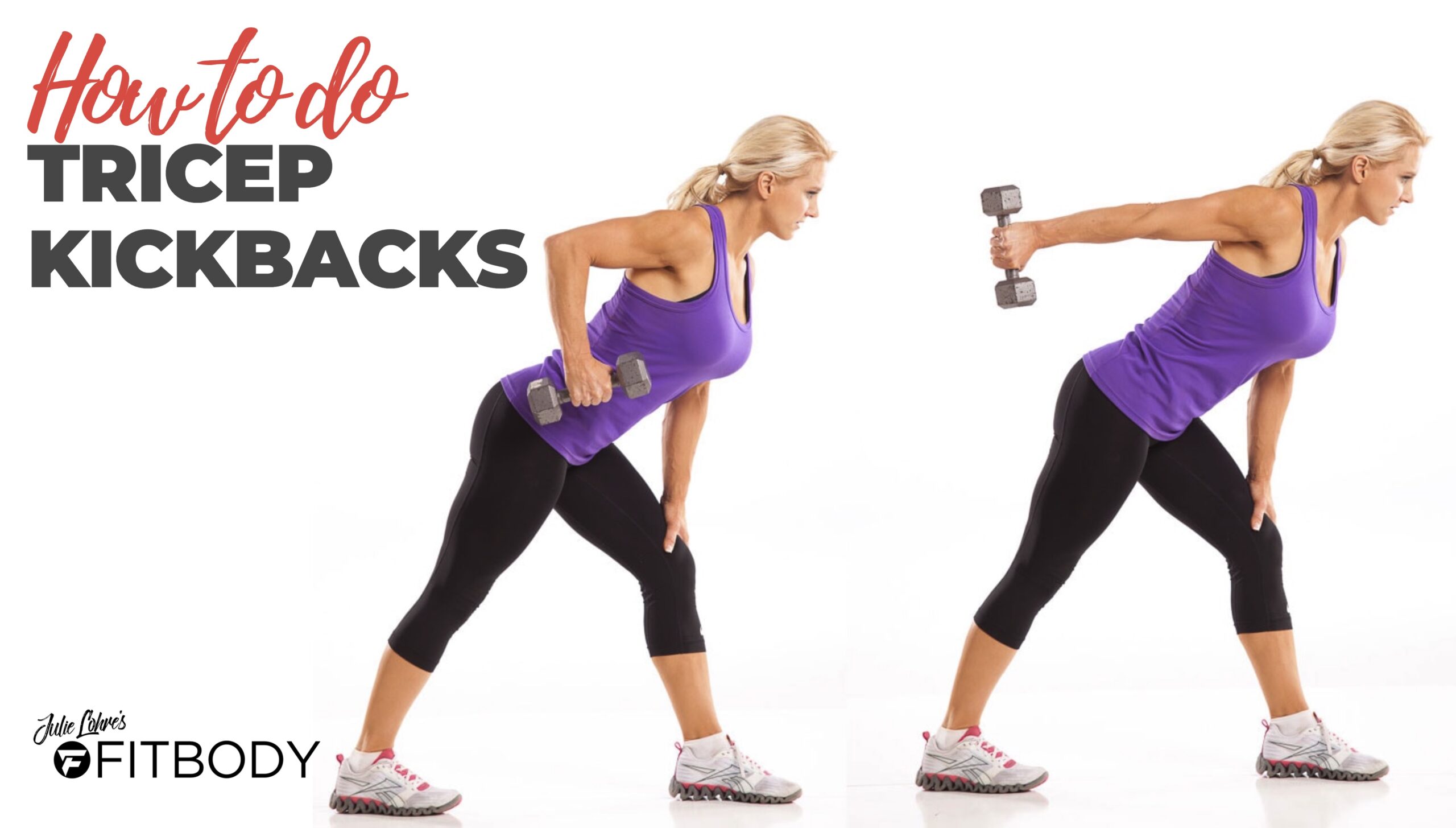
Watch-Outs in Tricep Kickbacks with Dumbbells
- Mind Your Form: Poor form can lead to reduced effectiveness and potential injury. Ensure your back is straight, and movement is controlled.
- Avoid Overextending: Do not lock your elbows as you extend your arms; keep a slight bend to protect the joint.
- Right Weight Selection: Start with lighter weights to master the form before progressing to heavier dumbbells.
- Listen to Your Body: If you experience any pain or discomfort beyond normal muscle fatigue, stop the exercise and consult a fitness professional.
Should tricep kickbacks hurt?
Dumbbell tricep kickbacks, like any exercise, should not cause pain. It’s important to differentiate between the normal sensation of muscle fatigue or exertion and actual pain. Muscle fatigue may feel like a burning sensation in the muscles during or immediately after the exercise, which is normal and indicates that the muscles are being worked. This sensation should subside shortly after completing the exercise.
However, if you experience sharp, stabbing, or persistent pain, it could be a sign of improper technique or an underlying issue. Pain can indicate that you’re either performing the exercise incorrectly, using too much weight, or have a pre-existing condition that’s being aggravated by the movement.


What weight should I do tricep kickbacks?
The right weight for tricep dumbbell kickbacks varies depending on your fitness level, experience, and goals. Here are some guidelines I share with my online fitness and nutrition coaching clients to help choose the right weight:
- Start Light: If you’re new to tricep kickbacks or strength training in general, begin with a lighter weight. This could be anywhere from 2 to 5 pounds. The key is to choose a weight that allows you to maintain proper form throughout the exercise.
- Focus on Form: Your ability to perform the exercise with correct form is more important than the weight you use. If you find that your form is compromised, or if you’re swinging the weight rather than lifting it with controlled muscle action, reduce the weight.
- Consider Repetitions and Sets: Choose a weight that allows you to complete your desired number of sets and repetitions with good form, but that also feels challenging by the last few repetitions. Typically, a set can range from 10 to 15 repetitions. If the last 2-3 reps of each set aren’t challenging, it might be time to increase the weight.
- Progress Gradually: As you get stronger, you can gradually increase the weight. A small increment, such as adding 2-5 pounds, is a safe and effective way to progress.
- Listen to Your Body: Pay attention to how your body feels during and after the workout. Mild muscle soreness is normal, but sharp pain or discomfort that lasts for more than a few days is a sign that you might be lifting too heavy.
- Individual Differences: Remember, everyone is different. What works for one person might not be suitable for another. Factors like gender, age, fitness level, and overall strength play a role in determining the appropriate weight.
If you’re unsure, it can be beneficial to consult with a fitness professional who can assess your form and provide personalized advice. Remember, the goal is to challenge your muscles while maintaining safety and proper technique.
Tricep Kickbacks: A Deeper Dive into Muscle Engagement and Kinetics
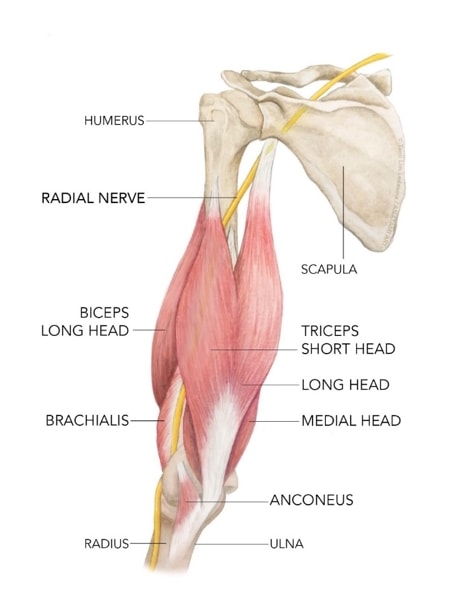
Anatomical Focus on the Triceps Brachii
To understand why exercises like the tricep kickback work so well for the arms, it can be helpful to dive deeper into the anatomy and kinetics involved. The triceps brachii is a three-headed muscle located at the posterior aspect of the upper arm, comprising the long, medial, and lateral heads. Each head originates from different points – the long head from the infraglenoid tubercle of the scapula, and the medial and lateral heads from the humerus. They converge into a common tendon that inserts into the olecranon process of the ulna. This unique structure allows the triceps to perform several crucial functions.
Functionality of the Triceps Brachii in Tricep Kickbacks
- Elbow Extension: The primary function of the triceps is to extend the forearm at the elbow joint. During the tricep kickback, when you move your forearm from a bent to a straight position, the triceps contract concentrically, leading to elbow extension.
- Role in Shoulder Stability: The long head of the triceps also assists in adducting (bringing towards the body) and stabilizing the shoulder joint. As you maintain a bent-over position during the exercise, the long head helps stabilize the shoulder joint, providing a solid base for the movement of the elbow.
Engagement of Additional Muscle Groups
- Shoulder Muscles: The deltoids, particularly the rear deltoids, are engaged to stabilize the shoulder joint. This is essential as you maintain a position with your arms raised at shoulder level.
- Core Muscles: The rectus abdominis, obliques, and lower back muscles play a critical role in maintaining the bent-over position. They work isometrically (without changing length) to stabilize your torso and prevent unwanted movement, ensuring that the focus remains on the triceps.
- Scapular Stabilizers: Muscles around the scapula, like the rhomboids and trapezius, engage to keep the shoulder blades retracted and stable. This position supports proper alignment and muscle activation throughout the exercise.
Kinetic Chain Involvement
Tricep kickbacks involve both the open and closed kinetic chains. The open kinetic chain is present in the movement of the forearm, where the hand (holding the dumbbell) is free to move. This allows for isolated engagement and strengthening of the triceps. In contrast, the closed kinetic chain is evident in the stabilization required through the feet, legs, and torso, connecting the body to the ground and providing a stable base for the exercise.
Tricep kickbacks are not just a simple arm exercise but a complex movement engaging multiple muscle groups and requiring coordination and stability throughout the body. Understanding the scientific basis of how these muscles work and interact can help optimize the effectiveness of the exercise and prevent injury. By focusing on proper form and controlled movements, you can maximize the benefits of this exercise for both aesthetics and functional strength of the arms.
Find out more about Online Personal Training with Julie
